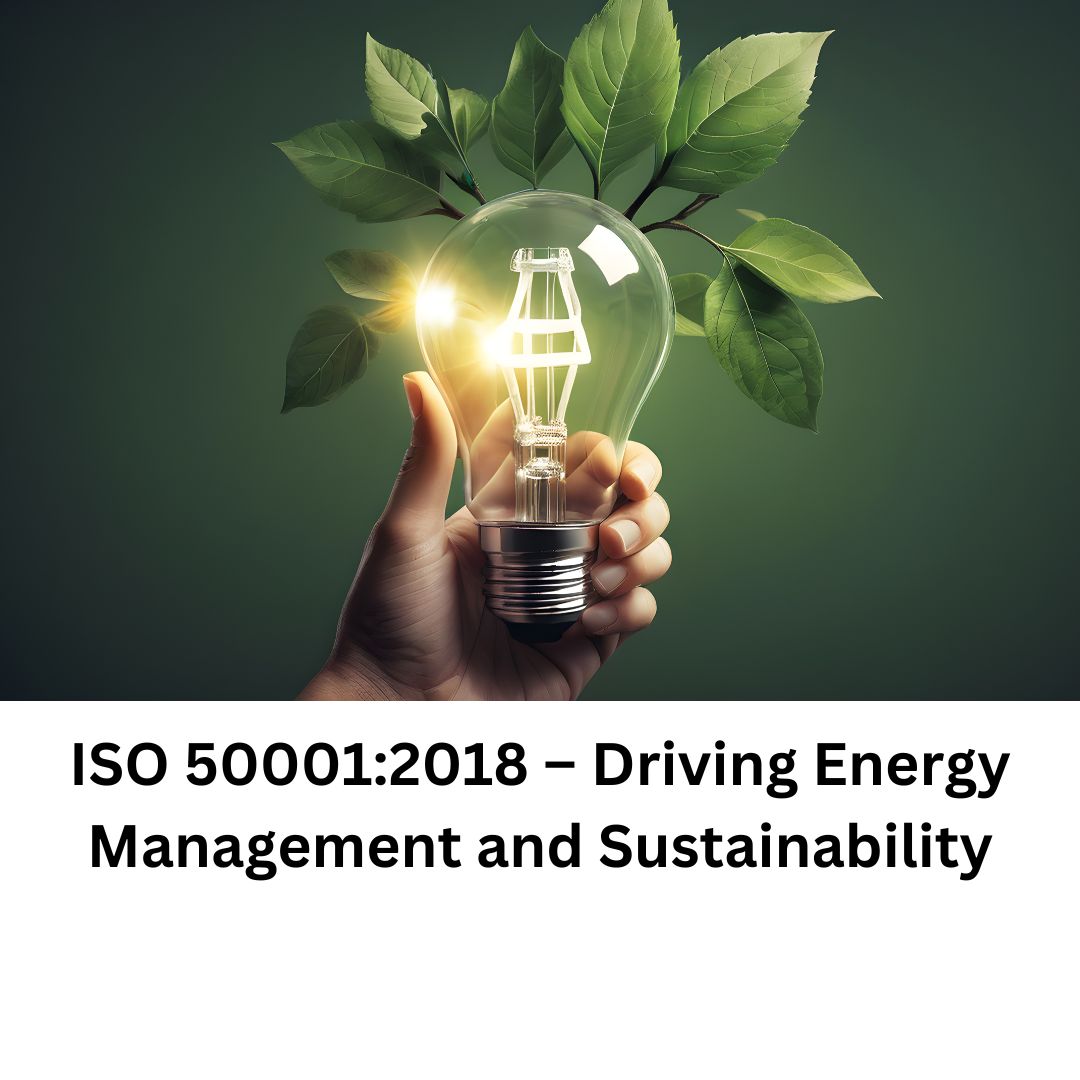Blog Details

ISO 50001:2018 – Driving Energy Management and Sustainability
In today’s rapidly changing business landscape, energy efficiency has become a global priority. Rising energy costs, increasing environmental regulations, and growing awareness about climate change are pushing organizations to rethink how they consume and manage energy.
ISO 50001:2018, the International Standard for Energy Management Systems (EnMS), provides a structured framework for organizations to establish, implement, maintain, and improve their energy performance. By adopting ISO 50001:2018, companies can reduce energy consumption, lower costs, and minimize their environmental footprint—while boosting competitiveness and reputation.
⚙️ What is ISO 50001:2018?
Developed by the International Organization for Standardization (ISO), ISO 50001:2018 offers a systematic approach to energy management, helping organizations of all sizes improve energy efficiency and reduce waste.
The 2018 revision aligns with the Annex SL high-level structure, making it easily integrable with other standards such as ISO 9001 (Quality), ISO 14001 (Environment), and ISO 45001 (Occupational Health & Safety).
🎯 Objectives of ISO 50001:2018
- 🔄 Promote continuous improvement in energy performance.
- 🧩 Establish a systematic framework for energy efficiency.
- 🌍 Reduce greenhouse gas emissions and environmental impact.
- 💰 Lower energy costs and improve resource utilization.
- 📜 Support compliance with legal and regulatory energy requirements.
🛠️ Key Principles of ISO 50001:2018
The standard operates using the Plan-Do-Check-Act (PDCA) cycle to drive improvement. Core principles include:
- 📘 Energy Policy: Defining commitment to improving energy performance.
- 📊 Energy Planning: Identifying energy uses, setting objectives, and tracking key indicators.
- 🔧 Implementation & Operation: Ensuring resources, training, and documentation are in place.
- 📈 Monitoring & Measurement: Tracking performance and verifying effectiveness.
- 🕵️♂️ Internal Audit & Review: Regularly auditing and reviewing for compliance and improvement.
💡 Benefits of ISO 50001:2018 Certification
- 💵 Reduced Energy Costs: Identify inefficiencies and cut waste, directly boosting profitability.
- 🌱 Environmental Sustainability: Supports emissions reduction and corporate responsibility efforts.
- ⚖️ Regulatory Compliance: Stay ahead of local and international energy regulations.
- 🏆 Improved Corporate Image: Show commitment to sustainability to customers and stakeholders.
- 🔗 Integration with Other Standards: Easily aligns with ISO 9001, 14001, 45001, etc.
- 🧠 Enhanced Employee Awareness: Foster a culture of energy responsibility.
- 📉 Risk Management: Reduce exposure to volatile energy markets and improve operational resilience.
🏭 Industries That Benefit Most
While ISO 50001 is applicable to all sectors, high-energy-use industries especially benefit:
- ⚙️ Manufacturing and Processing
- 🛢️ Oil & Gas and Petrochemicals
- 🚗 Automotive and Aerospace
- 🏢 Construction and Real Estate
- 🏥 Healthcare and Pharmaceuticals
- 💻 Data Centers and IT Services
- 🏨 Hospitality and Retail
- 🏛️ Government and Public Sector Utilities
📋 Steps to Implement ISO 50001:2018
- 📍 Gap Analysis: Evaluate existing practices against ISO 50001 requirements.
- 👥 Leadership Commitment: Secure executive support and define an energy policy.
- 🔍 Energy Review: Analyze usage patterns and identify significant energy consumers.
- 🎯 Set Objectives & Targets: Establish measurable goals for energy improvement.
- 📚 Training & Awareness: Equip teams with energy knowledge and responsibilities.
- 📝 System Documentation: Create procedures and records to support the EnMS.
- 🚀 Implementation: Roll out and embed energy management into operations.
- 📊 Monitoring: Measure progress with energy performance indicators.
- 🕵️ Internal Audit: Conduct regular reviews to evaluate effectiveness.
- 🏅 Certification Audit: Engage a certification body for final assessment and issuance.
⚠️ Common Challenges (and How to Overcome Them)
- 💸 Initial investment in metering and energy technologies.
- 📉 Limited internal expertise or lack of energy data insights.
- ⛔ Resistance to operational changes by staff.
- 📆 Ongoing commitment required for monitoring and reporting.
With support from experienced consultants and auditors, these challenges can be managed efficiently—turning obstacles into opportunities.
🌍 Future of ISO 50001:2018
As global movements toward Net Zero, climate action, and ESG reporting intensify, ISO 50001:2018 will remain central to sustainability strategies. Organizations certified under ISO 50001 will be better prepared to lead in a low-carbon, energy-conscious economy.
🤝 Why Choose Ascent Inspecta for ISO 50001:2018 Certification?
- 🌐 Expertise & Experience: Decades of hands-on ISO experience, especially in energy-intensive industries.
- 🎯 Tailored Solutions: Customized approaches based on your energy profile and sector needs.
- 🛠️ End-to-End Support: From gap analysis to post-certification improvement—our team guides you through every step.
- 🏅 Global Recognition: Certification through Ascent Inspecta boosts international and industry-wide credibility.
- 🔒 Commitment to Excellence: We focus on creating value, not just achieving a certificate. Our systems drive real, measurable improvement.
With Ascent Inspecta as your trusted certification partner, ISO 50001:2018 is not just a compliance tool—it becomes a catalyst for long-term energy efficiency, sustainability, and operational excellence.
Leave a Comment
We would love to hear your thoughts! Please leave your comment below:
